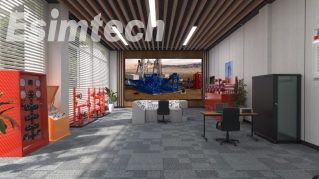In the ever-evolving landscape of the oil and gas industry, the integration of advanced technologies has become a beacon of progress, illuminating the path towards safer, more efficient, and sustainable drilling operations. Among these technological marvels, drilling simulators stand out as a transformative force, revolutionizing the way drilling personnel are trained and equipped to handle the complexities of modern drilling challenges.
The project has already garnered significant attention, with over 25,000 people on the waitlist to support the Kickstarter campaign. This campaign, which runs from April 8 to early May 2025, aims to fund the animation production and reward fulfillment, proving audience interest in streaming platforms. By backing the project, supporters become co-creators, with opportunities to voice characters, collaborate on dialog, or appear as animated characters.

Oil and Gas Animation provides a highly effective and engaging alternative to traditional training methods. By leveraging advanced computer animation technology, these simulations create realistic representations of drilling operations, equipment workings, and emergency response scenarios. Oil and Gas Simulation Software not only enhances comprehension but also allows trainees to practice in a controlled, safe environment.
This kind of precision training cuts through the fog of uncertainty. Operators can anticipate specific downhole behaviors, understand pressure responses in real time, and master emergency procedures tailored to their rig’s configuration. The result? Sharper decision-making and faster responses when the pressure really mounts.
The trick is translating these benefits into tangible numbers. For example, how much does avoiding a single blowout or well control failure save your company? What’s the cost of an hour of downtime on your rig? How much more productive is a crew that’s trained on scenarios mimicking their exact equipment and formations?